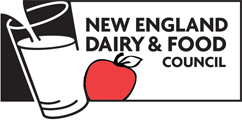What do the Boston Marathon and National School Breakfast Week have in common? Nutrition.
A marathon runner stumbling towards the finish line, looking miserable, and with a limping stride is the all too common “hitting the wall” visual. The runner no longer has the fuel they need to perform. Their energy level, stride, and muscle coordination begin to crumble away—all because of a lack of food and fluids to get them to the finish line.
Any given weeknight, a child likely eats dinner and maybe a bedtime snack. They then lay down for an 8-hour sleep. As their morning alarm strikes 7 a.m., the child prepares for the school day. For many students, breakfast is not a regular meal in their day. These students haven’t eaten for more than 10-hours by the time they sit down in their classroom to begin the school day. Soon enough, they’ll be hitting the wall like a marathon runner.
Below, you’ll learn more about:
- The importance of school breakfast.
- The types of school breakfast programs offered.
- Success stories from around New England.
- How your community’s school can get involved.
School Breakfast Offers Benefits to Student Health and Academics
Students may not eat breakfast for a variety of reasons. For instance, no food is offered to them at home, kids sleep in, kids refuse or forget to eat, arrive at school in the nick of time, or the school’s cafeteria is neither centrally located or no alternative breakfast programs are offered.
Many of the school nutrition programs that New England dairy farmers help provide funding for consistently report back the improvements that they’ve seen in students.
- Higher grades and standardized test scores: Students can focus on their schoolwork instead of their hunger.
- Fewer sick days: Good nutrition supports a healthy immune system.
- Fewer visits to the nurse: Hunger “stomach aches” are trumped when students eat school breakfast.
What Types of School Breakfast Programs Exist?
Many types exist and can function together. For instance, Salemwoo d School in Malden, MA offers a traditional cafeteria breakfast with Breakfast in the Classroom and Grab ‘N’ Go.
Read NH Hunger Solutions article that lists the advantages and what program would fit best for each school.
Breakfast After the Bell and Breakfast After the Bell
“Teachers and students continue to have such a positive experience with breakfast in the classroom. Hopefully this can inspire other schools in our area to consider changes to their breakfast service where possible.” – Helen Rortvedt, Food Connects
Food is prepared and packed up in the cafeteria’s kitchen, and then delivered to classrooms before the morning bell. As students enter the classroom, a nutrient-rich breakfast awaits them. Like a family meal, students sit down together to quietly eat while they complete classwork.
No student is singled out, and each student begins their day on a level playing field.
Grab ‘N’ Go
On their way to class, students walk by a station equipped with to-go items. Students choose a selection that forms a nutrient-rich, well-rounded breakfast and head off to class. Breakfasts can be eaten in the classroom, but this isn’t necessary.
Items offered could include smoothies made with fruit and low-fat or fat-free dairy; fruit, yogurt, and granola parfaits; fruits; cartons of milk or yogurt; cereal cups; granola bars; or breakfast sandwiches.
Mobile Breakfast Carts
Taking the Grab ‘N; Go program one step further, the mobile carts can be placed wherever students hang out. For instance, near the school’s front doors, throughout the hallways, or outside near the bus drop-off.
Cafeteria
Surprise! Cafeterias are still used as a venue to serve school meals.
Success Stories from Around New England
Need some local inspiration? Click to learn more about successful school breakfast stories from your area.
- Connecticut: 230,000 Additional School Breakfasts Served in Meriden
- Massachusetts: Breakfast Participation Increases by 500-percent
- New Hampshire: Milford and Monroe Wake Up to School Breakfast
- Rhode Island: 40,000 Extra Breakfasts Served in North Providence
- Vermont: Breakfast After the Bell Challenge Celebrates 10 Local Schools
Resources to Help Reap the Benefits of School Breakfast
To kick start your school breakfast efforts, check out the following:
- Our “Breakfast” page
- Our regional school Registered Dietitians and Program Specialists
- Pediatric Dietitian Jill Castle’ School Breakfast Post
- Vermont’s Fuel Up to Play 60 Colchester Middle School Breakfast Post
- School Nutrition Association
- Hunger Free Vermont and Breakfast After the Bell
- Massachusetts School Breakfast Challenge
- New Hampshire Hunger Solutions
- School Breakfast Program (Connecticut State Department of Education)
Updated March 7, 2017

